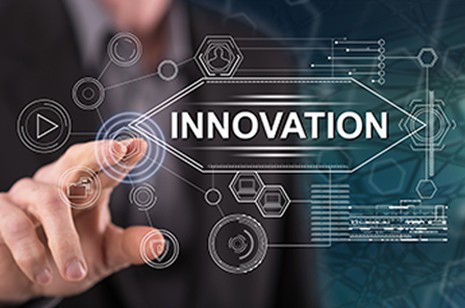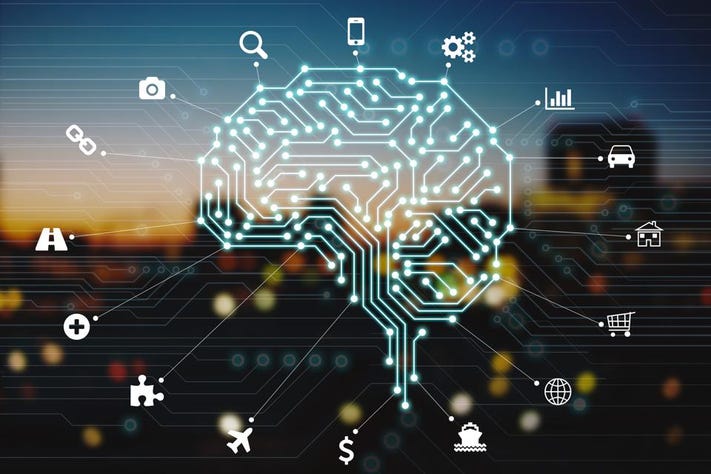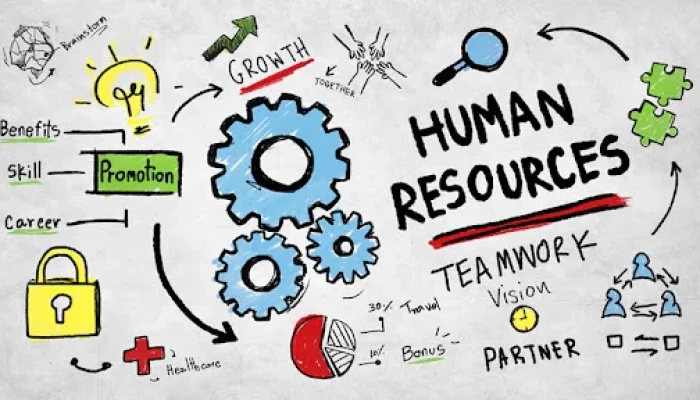Hello!
Digital transformation covers all areas of life and verticals. The digital world is becoming more connected to the real one, and new challenges are arising. DigitialMara prepared the observation of emerging technology trends. They include industry cloud platforms and autonomous systems, Metaverse, Web3, and multi-experience.
 Businesses aim to improve sustainability in their operations and provide sustainable products and services. Gartner states that a digital solution is sustainable if it delivers positive environmental, social, and governance outcomes for all market participants. This is where AI, cloud technologies, automation, and digital twins will all continue to rock.
Businesses aim to improve sustainability in their operations and provide sustainable products and services. Gartner states that a digital solution is sustainable if it delivers positive environmental, social, and governance outcomes for all market participants. This is where AI, cloud technologies, automation, and digital twins will all continue to rock.
AI-based products are used by businesses to enable internal and external processes and provide services that improve the user experience. IDC projects that AI technology spending will reach $500 billion by 2023. Technology allows companies to increase resilience, scale operations and take advantage of data-driven decision-making.
Online transactions require trust. Online transactions are becoming more popular with both individuals and businesses. New security measures are in demand. Blockchain technology can create a decentralized network that is possible to solve this problem. This architecture assumes encryption for data storage and transmission and a coordinated form of digital ownership.
Let’s take a closer look at tech trends that affect production, consumption, development, perception, and more. Trends can be broken down into three categories: user experience, business solutions, and web and mobile development.
Tech Trends for Business Solutions
-
Autonomous systems
 As enterprises seek to be more efficient and rational, automation is becoming more common in many industries and applications. Automated systems can be used to automate most processes. They increase productivity and accuracy, offer flexibility, and data-driven insights, and decrease the time it takes to complete repetitive tasks.
As enterprises seek to be more efficient and rational, automation is becoming more common in many industries and applications. Automated systems can be used to automate most processes. They increase productivity and accuracy, offer flexibility, and data-driven insights, and decrease the time it takes to complete repetitive tasks.
They have many applications. They are useful in many areas, including manufacturing, vehicle supply chains, transportation, logistics, delivery, healthcare, and energy solutions.
The architecture of autonomous systems is complex and includes many components, including digital tools. Reliability, safety, and real-time control are the essential requirements. The system’s main benefit is its ability to adapt to changing circumstances and make independent decisions based on large quantities of data.
Data is collected from AI systems and automated quality management systems, IoT sensors, drones enterprise resource planning customer relationship management, and quality control systems. You will need to have a team consisting of data scientists, programmers, system engineers, and data scientists in order to develop this system.
-
Industry cloud platforms
 Cloud computing allows companies to be more flexible and scalable and to accelerate their processes. Cloud platforms for industry or industry are specifically designed to meet the needs of industries like healthcare, finance, government, and others.
Cloud computing allows companies to be more flexible and scalable and to accelerate their processes. Cloud platforms for industry or industry are specifically designed to meet the needs of industries like healthcare, finance, government, and others.
They are a combination of software, platform, and Infrastructure-as-a-service. Gartner predicts that more than half of core business operations will be done using cloud platforms by 2027. Experts believe this approach is more than the traditional cloud and offers enterprises additional value.
Cloud platforms allow one to create a secure environment that conforms with privacy and security standards, follows predetermined industry processes and scenarios, and manages multilayer tasks. The toolkit includes data models, workflows, and APIs. Advanced capabilities such as AI and ML and IoT, Blockchain, AR, VR, and blockchain are added to it. Enterprise receives a system that can withstand heavy loads and handles large volumes of data.
-
Platform engineering
 Platform engineering is designed to improve developers’ productivity, simplify processes, and improve the user experience. It is also important to accelerate the delivery of software. These platforms include standard toolkits, self-service capabilities, reusable components and services as well as automated processes. Team members get the infrastructure that is centrally managed with enhanced workflows. Companies also benefit from consistency and efficiency in their processes.
Platform engineering is designed to improve developers’ productivity, simplify processes, and improve the user experience. It is also important to accelerate the delivery of software. These platforms include standard toolkits, self-service capabilities, reusable components and services as well as automated processes. Team members get the infrastructure that is centrally managed with enhanced workflows. Companies also benefit from consistency and efficiency in their processes.
The platform’s building covers the following key areas: a platform for internal developers, security of the key delivery process, internal service level agreements, and team performance indicators. The platform cannot be used in all cases and should be tailored to each company’s specific needs. Specific functions are determined by the needs of the users, developers, data processing specialists, etc.
User Experience Trends
-
Metaverse
Metaverse has been strongly accessed by Facebook and Mark Zuckerberg. However, this notion is much more. This new digital interaction has an immersive effect that replicates the real world. This allows users to experience a real-life experience in virtual reality. According to Mckinsey’s presentation, there are five main activities that can be done in Metaverse.
 These include entertainment, social, gaming, and travel. This technology can be used to benefit education, it seems. The Metaverse can host meetings, conferences, and many other events. The Metaverse can be used by brands to sell their products or launch marketing campaigns. It is possible to train and create digital-twin models.
These include entertainment, social, gaming, and travel. This technology can be used to benefit education, it seems. The Metaverse can host meetings, conferences, and many other events. The Metaverse can be used by brands to sell their products or launch marketing campaigns. It is possible to train and create digital-twin models.
Metaverse design can be a tedious process that requires many technologies and technical requirements. Artificial Intelligence (IoT), Virtual and Augmented reality (3D modeling), distributed computing, microservices, and edge computing are all basic technologies.
All data must be protected and the infrastructure must be strong. Because thousands of people can interact at once and use different devices and platforms, the system must be able to withstand a lot of loads.
But things are not looking so good. Companies can invest in the metaverse, but not always get a return. Meta, for example, which has invested $100 billion over the past two years, has now lost $3.7 billion over the last few months. This is due to many factors.
Start with ugly avatars and an insufficient environment. End up with poor sales of headsets and a dearth of virtual reality video games. Low levels of trust can cause reputational damage.
-
Chatbots with AI
 Chatbots are more than just for customer service and sales. They are smart and can adapt to customer conversations. They can be used depending on the complexity of the algorithm, in social apps for conversation, therapy apps, or educational apps to answer general queries and conduct tests.
Chatbots are more than just for customer service and sales. They are smart and can adapt to customer conversations. They can be used depending on the complexity of the algorithm, in social apps for conversation, therapy apps, or educational apps to answer general queries and conduct tests.
Chatbots can also be used to assist the company’s internal processes and become part of employee services, such as IT help, employee training, administrative support, and HR bots. Chatbots can be used to complement websites, applications, and messengers.
Smart bots are built on Natural Language Processing and machine learning models. They can remember previous conversations and continuously learn and produce more personalized communication.
This functionality may not be enough. You can also add behavioral analytics to improve embedded conversation flows and automated translation to make chat multilingual. Customers often share sensitive and personal information. Data protection is therefore crucial.
-
Multiexperience
 Multi-experience design is possible due to the increasing use of voice, wearables, and AI. This allows for a seamless, connected, and engaging experience across all digital touchpoints. Your software product is used by the user on multiple platforms, including mobile apps, voice assistants, and chatbots. They also interact with it via voice, text, and touch.
Multi-experience design is possible due to the increasing use of voice, wearables, and AI. This allows for a seamless, connected, and engaging experience across all digital touchpoints. Your software product is used by the user on multiple platforms, including mobile apps, voice assistants, and chatbots. They also interact with it via voice, text, and touch.
Multi-experience development platforms (MXDP), allow you to speed up the process of developing and deploying your app across multiple devices. Gartner defines MXDP to be a combination of front-end and back-end development capabilities that allow you to create fit-for-purpose apps based on touchpoint-specific modes. They are compatible with iOS and Android development, cross-platform development, responsive web apps, progressive web apps, chatbots, and AR apps.
-
Voice search
Your strategy should include voice search optimization for our websites and apps since most modern devices have voice recognition functions. Statista predicts that by 2024, there will be 8.3 million digital voice assistants. Voice commands are used by customers not only for smartphones but also for smart home devices and vehicles. This allows multitasking, frees up time, and saves hands. This is a fast and efficient way to communicate with customers.
Software Development Trends
-
Web3
HTML3 technology is relatively new. While some see the potential of it, others are more cautious. We can expect that this will change the architecture of web platforms, as well as how users interact with each other and the platforms. Web3 is unique in that it rejects centralized systems or intermediaries.
 All interactions take place peer-to-peer. Critics claim that this system is not suitable for businesses, but acceptable for public solutions. NFTs, play-to-earn, and decentralized financing are just a few examples.
All interactions take place peer-to-peer. Critics claim that this system is not suitable for businesses, but acceptable for public solutions. NFTs, play-to-earn, and decentralized financing are just a few examples.
Web3 development’s technology stack combines decentralized autonomous organizations (DAO), Blockchain capabilities, as well as AI adaptive algorithms. Some of the key features include the semantic web, crypto payments, verifiable authentication, and automation. However, it is important to ensure cyber hygiene and privacy.
-
Low-code (no-code)
Low-code development is becoming more popular. There are many low-code platforms available that can be used as an alternative to traditional development. The principle of their operation is based upon a drag-and-drop interface and pre-configured templates.
You can use web, mobile development, IoT, testing, workflow automation, and data science. This approach allows you to quickly develop and deploy applications with very few resources. If you’re a startup, this is a feasible option for MVP development.
You need to be aware of several aspects when working with low-code code or no-code. When choosing a platform to use, there are many factors you need to consider. Cloud support, integration with the existing systems, number of users collaborative IDEs, multichannel deployment, and scalability are just some of the factors to consider.
Platforms may not allow for customization and may limit your technical options to modify your code. Low code can be a useful tool for professionals, saving time and resources, and validating your ideas.
-
Automation testing
 Automation testing should be part of your QA strategy. Software quality is critical for both internal processes as well as the products and services you provide to customers. There are many types of failures, freezes, and late detections of bugs that can lead to financial and reputational losses.
Automation testing should be part of your QA strategy. Software quality is critical for both internal processes as well as the products and services you provide to customers. There are many types of failures, freezes, and late detections of bugs that can lead to financial and reputational losses.
Automation allows for greater coverage of testing and continuous testing that covers all phases of the development process. Automation is more precise, efficient, and reliable, which in turn saves time and money.
Your product will be launched faster if you are able to test and debug your products quickly. The quality of your software will determine how satisfied customers are. A QA engineer is responsible for automating tests.
Advanced technologies such as cloud, artificial intelligence and machine learning, natural language processing, robotic process automation, and the cloud can all help to enhance the test’s capabilities. You can create multiple testing environments, simulate real-world conditions, conduct large-scale testing, and many other things.
Last Words
 As new challenges emerge, the digital world changes. Emerging technologies are shaping trends. These trends require businesses to be flexible and adaptable. Understanding trends is key to staying competitive in an ever-changing market. You can adapt your strategy, identify growth opportunities, and invest in areas in which you are interested.
As new challenges emerge, the digital world changes. Emerging technologies are shaping trends. These trends require businesses to be flexible and adaptable. Understanding trends is key to staying competitive in an ever-changing market. You can adapt your strategy, identify growth opportunities, and invest in areas in which you are interested.
Thank you!
Join us on social media!
See you!






